We are usually used to facing an increase in temperature and fever during SARS and acute respiratory infections. But sometimes with a cold there is a low temperature. The causes and consequences of this phenomenon should be considered in more detail.
Sometimes the body temperature during SARS does not increase, but, on the contrary, decreases
First of all, you should know what temperature is normal in medicine. This is an approximate range of 35.7-37 degrees.
When the indicators fall below the specified mark, that is, 35.7, this is considered a decrease in temperature. However, much depends on the physiological characteristics of the human body.
Sometimes people with both 35 and 35.5 degrees Celsius feel comfortable without needing additional treatment. However, such indicators cool internal organs which is fraught with dangerous consequences.
Low temperature with a cold, it is physiologically caused, first of all, by the action of toxins on the hypothalamus. The reason is that intoxication of the body occurs, the functioning of the central nervous system is disrupted and, accordingly, the temperature regime suffers. With a decrease in temperature indicators, not only adults, but also children can face.
Sometimes a viral infection that weakens the immune system leads to a similar result.
Symptoms and diagnosis
Low rates for SARS can be easily recorded using a conventional medical thermometer. Although this can be guessed by certain symptoms:
- causeless fatigue;
- difficulty getting up in the morning
- drowsiness, regardless of how much sleep you managed to get;
- depressed and irritable mood;
- chills and a feeling of chilliness;
- feeling of nausea.
Low body temperature during a cold is accompanied by a decrease in the resistance of the immune system, resulting in physical, psychological, and mental exhaustion.
But more serious and dangerous pathologies can be assumed when such a symptom appears. That is why it is so important to contact a medical specialist in a timely manner, who:
- collect anamnesis;
- refer you for examinations;
- make an accurate diagnosis, identifying the root cause;
- prescribe the appropriate treatment.

When the temperature is low, the patient may feel chills.
Do not try to determine on your own, wondering if you have a cold, SARS, or something else worse. What if you make a mistake and start treating something completely wrong and not as required, as a result of which you will cause even more harm to your health.
What to do?
Requires special attention low temperature with a cold (flu and any other SARS) in a child.
Children under the age of three usually suffer from respiratory infections, having low temperature indicators, since the thermoregulatory process has not yet fully formed in their body.
As for older children and adolescents, the reasons for reduced rates in SARS may be the same as in adults. Puberty (the time of maturation) is characterized by an altered hormonal background and, accordingly, this is one of the signs of a natural process.
But if ARI is diagnosed for sure, one should not delay treatment - which can be folk and medication. However, this does not mean at all that it is necessary to take drugs that increase the temperature.
Antiviral agents also help - provided that low temperature data is the result of the flu and other viral infections. But do not forget to supplement such medicines with vitamin complexes - especially when it comes to treating a child.
It would be nice if the diet of a person with a low temperature during and after an illness (child and adult) is replenished with:
- fruit juices;
- echinacea tincture;
- herbal teas;
- fresh vegetables (according to the season).
However self-medication is definitely not allowed. The doctor must make sure that the cause is really a cold, flu or other acute respiratory viral infections, and not, for example, allergic reaction for any drug.
It is clear that taking antipyretics at low temperatures is extremely contraindicated. How to deal with this condition?
Doctors give some useful advice:
- complete rest is needed - no physical and psychological stress;
- sleep should be at least eight hours;
- take warm baths;
- wear comfortable clothing that does not contain synthetic fabrics;
- drink lemongrass tincture until you achieve recovery (it stimulates the immune system);
- take calcium and vitamin C.
Sometimes, after the flu or SARS, the temperature stays at 35 or 36 degrees and is in no hurry to rise. This means that, most likely, the body has not yet had time to fully strengthen itself. Therefore, it is necessary to continue to observe the above measures and strengthen the immune system in every possible way until the condition is completely normalized.
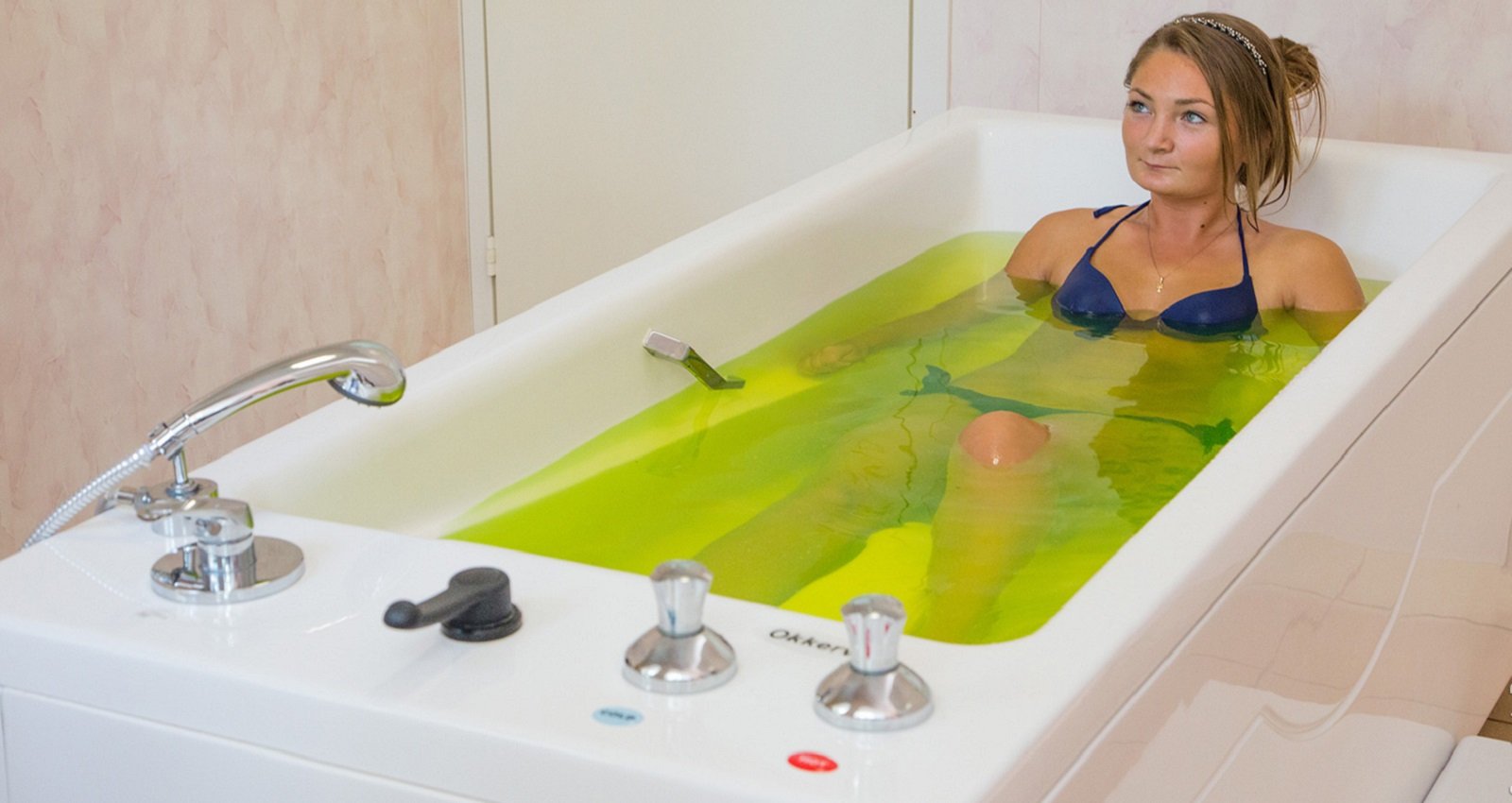
A warm bath is what you need at a low temperature!
Even 35.8, 36.1 and 36.2 degrees with a cold in adults can be considered low rates - depending on how the patient feels. At the same time, 36.9 degrees would seem to be in the range normal temperature, however, in some people, based on their individual physiological characteristics, it is considered as an increased indicator.
So let your doctor determine how and why your temperature dropped, how it threatens your health and what should be done next.
Asthenic syndrome
« Why is there a low body temperature after the flu?”- this question is often asked by people on the Internet, faced with a similar situation in practice.
Decreased rates after a flu infection, colds and SARS can be observed for several weeks (sometimes up to two months). What to do about it? First of all, continue to improve your health in every possible way. This is the main thing.
The body gave a lot of strength to fight the infection, which, of course, affected his condition. This is called asthenic syndrome. Other symptoms include:
- lack of appetite;
- malaise;
- feeling of apathy;
- weakness;
- irritable mood;
- frequent dizziness;
- feeling of drowsiness;
- sweating;
- low performance blood pressure.
In a child after SARS, this can happen due to uncontrolled intake of antipyretic drugs.
Serious pathologies
However, sometimes the answer to the question: why does the temperature drop during a cold and after the flu, may not be associated with asthenic syndrome, but with the presence of severe pathologies.
Everything is pretty serious.
The reasons may be as follows:
- dysfunction of the endocrine system, hyperfunction of the thyroid gland;
- anemia;
- the presence of mental disorders, including anorexia;
- hypovitaminosis.

It is necessary to check with a doctor to rule out more serious pathologies.
Naturally, the doctor must carefully examine everything in order to exclude the possibility of severe pathologies from the very beginning in the treatment of fever and weakness with a cold.
How to solve a problem?
Therapeutic measures prescribed by doctors to normalize low temperature indicators are aimed primarily at improving the body's defenses and normalizing the functioning of the immune system.
For this you need:
- restore normal daily routine;
- eat fully, getting the necessary vitamins and microelements with food;
- be physically active;
- avoid negative emotions and, conversely, try to see the positive in everything;
- take immunostimulating drugs.
It is important that convalescent person there was a full sleep, because it is at this time that the body rests, and recovery processes take place.
Since the fight against a viral infection is spent a large number of vitamins, their reserves should be replenished. A fortified diet will help with this, including foods with vitamins A and C, as well as B2 and B6. In particular, such microelements can be found in large quantities in:
- cabbage;
- dairy products;
- rosehip tincture;
- liver;
- persimmon;
- citrus;
- dried apricots.
In the pharmacy, you can also buy useful multivitamins, with which you can improve immunity - Multi-tabs, Centrum, AlfaVit, and so on. There are also herbal teas and immune-boosting medicines like lemongrass, ginseng, echinacea, and eleutherococcus.
Excessive physical activity, of course, should not be. For those who, for example, are involved in professional sports, it is advisable to take a break from their activities during a low body temperature. However, gymnastics in the morning, light jogging and outdoor walks are just recommended. They will help to normalize the condition faster.
Gradually, the load will increase and expand the volume of exercises performed. By the way, swimming in the pool at low temperatures is contraindicated, up to their normalization.
But - again - if the temperature is below 36 degrees and the patient does not feel well, he should appear not only at the therapist, but also at a number of other doctors for examination (for sure, the therapist will give appropriate referrals to an endocrinologist, immunologist, and so on).
Why does the child have a low temperature?
Many young parents are seriously worried about the fact that their little child with ARVI does not have a high temperature, as is usually the case, but a low temperature.
There are, however, so-called non-painful causes of this phenomenon that you should be aware of:
- Not having time to form thermoregulation. This often happens in children whose age less than a year. In this situation, you can encounter not only hypothermia, but also overheating. This condition is not considered pathological.
- Hypothermia. It is enough for a baby (in the first three months) to cool down quite a bit so that his temperature indicators decrease. However, if his condition is good - he eats, sleeps normally, behaves cheerfully - you should not worry.
- Premature baby. Underweight. In such situations, low rates are the norm. Moreover, the feature persists until the baby gets the kilogram that is not enough for him and catches up with his peers. By the way, it is easy for such children to become overcooled, and therefore their thermoregulation should be treated more carefully.
- Physiological causes of temperature fluctuations. Often, in sleeping children, these indicators are low, while in awake children they increase. In general, for this reason, it is not recommended to measure the temperature of a child who is sleeping or has just woken up.
- response to vaccination. Of course, most often in these situations one has to deal with hyperthermia, but a decrease is also possible, since the vaccine directly affects children's immunity. Therefore, pediatricians do not recommend taking antipyretic drugs (like Ibuprofen or Paracetamol) in advance (before the vaccination procedure). It remains to be seen how the body will respond to immunoprophylaxis. Most often, reduced rates are encountered after DTP vaccinations.
- The need to restore the child's body after an illness.
- Reaction to taking antipyretic drugs. It is quite difficult for the fragile organisms of children to control thermoregulation, and therefore, after the same Paracetamol, the temperature may drop below the normal level. However, the condition is normalized in most cases after a few hours (less often - a few days).
- Overdose of vasoconstrictor drugs - usually drops in the nose. These funds are not as harmless as they seem. Sometimes taking them in excessive amounts leads to fainting and the need for urgent hospitalization. So be careful and be extremely careful!
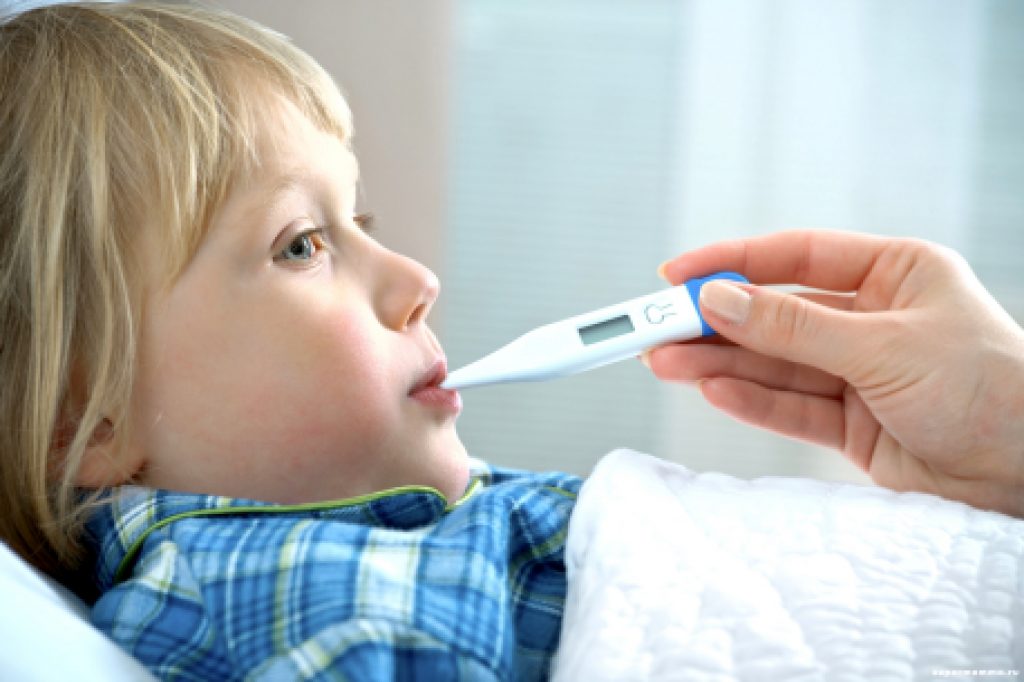
Children also face the phenomenon of low temperature.
In general, both children and adults can experience a low temperature with a cold. This situation is considered normal even after the disease has passed. The most optimal solution to the problem is to strengthen the immune system.
Everyone has had to get sick with a cold or flu more than once in their life, so everyone knows how unpleasant it can be. Not only do you have to take sick leave, and previously made plans may be violated. The body also weakens after an illness, and it is necessary to restore the spent forces.
Usually, with an acute respiratory infection, a general malaise begins, a cough and runny nose, and a sore throat may appear. High or low body temperature with a cold is largely due to the general condition of the patient before the onset of the disease.
Lowering the temperature with a cold is less common than fever and fever, and it says that you simply do not have the strength to fight the disease.
Pathogenic bacteria and viruses die, so not always bringing down the heat is the right tactic in treatment. If you are worried about drowsiness and lethargy, and the thermometer shows 35 degrees Celsius, you should seriously think about restoring the body's defenses.
A low temperature during a cold may persist after recovery, and this indicates general exhaustion. Overtime, lack of sleep, and stressful situations at home and at work can trigger this condition. A body temperature of 35.5 degrees with a cold is dangerous because there is no way to seriously fight back the disease on your own, you need borrowed pharmacological help. Your own immune system is practically unable to protect you. Against this background, the development of pathological chronic conditions with serious consequences is possible. Low temperature and weakness during colds are not treated with some special medicine, this issue must be approached comprehensively and very responsibly.
Why does body temperature drop with a cold?
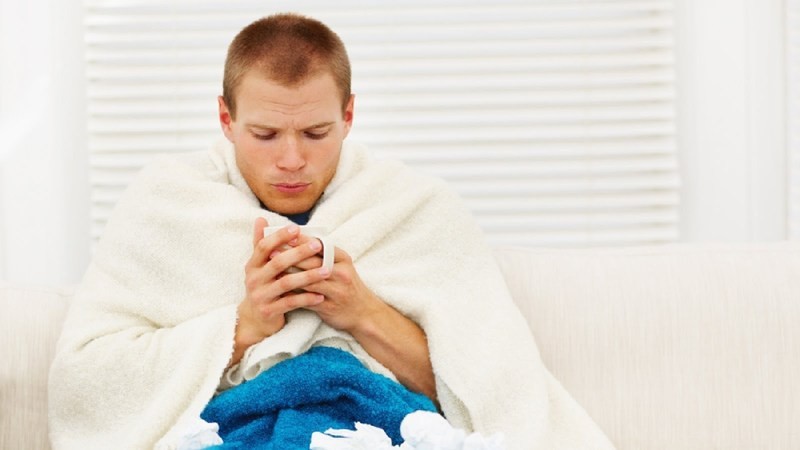
Low temperature with a cold without a reason is basically impossible. Each pathological state of our body indicates a violation in its work.
Let's try to get to the heart of the problem. A low body temperature in a person with a cold can be caused by the following factors:
- the patient's body is weakened by a recent illness, the energy balance is disturbed;
- depletion of the body;
- disorders in the thyroid gland;
- disorders in the work of the adrenal glands;
- exacerbation of chronic diseases;
- weakened immunity.
With a cold, a temperature of 35 degrees is not the norm, but it is far from always possible to detect it without a thermometer. Typically, the symptoms of impaired thermoregulation are as follows:
- apathy;
- drowsiness;
- general malaise;
- pale skin;
- lack of appetite.
As you can see, the symptoms can be attributed to normal fatigue, therefore, if there are signs of acute respiratory infections such as coughing, runny nose and headache after a cold, we recommend that you keep a thermometer at hand to control the situation. A decrease in temperature during a cold can be gradual, it is better to take a control measurement two or three times a day in order to understand the general trend in changes in indicators.
A temperature of 35.6 to 37 degrees is considered the norm, so a temperature of 35.5 in an adult with a cold indicates that the body does not have enough strength to fight the infection. In this case, it is necessary to enrich your diet with fruits, cottage cheese and other healthy foods that will help replenish exhausted strength, and observe bed rest up to sustainable improvement.
If you have a low temperature after a cold, be on the lookout and be wary of a relapse, because immunity is lowered, the disease may well return. Physical and mental stress during this period is contraindicated, it is necessary to take care of yourself and spend several days restoring the body's defense system.
Phorcis will not leave the cold a single chance
Prevention is the most effective way to fight a cold. You should not wait until the body finally weakens, and from every breath of the wind you will feel the first signs of the disease. Today you have a drug that will help prevent the frequent incidence of acute respiratory infections and contribute to a quick recovery at the initial stage of a cold. This drug is Forcys. Its price is no higher than that of popular symptomatic and antipyretic drugs, and its benefits are much greater. The effectiveness of Forcys tablets has been proven by clinical trials.
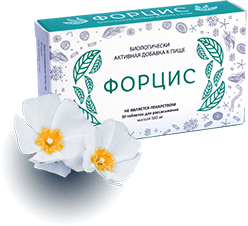
The mechanism of operation of this remedy is as follows: when the tablet is resorbed, the active substance enters the mucous membranes of the nasopharynx and forms a protective film, which becomes an insurmountable obstacle to pathogenic bacteria and viruses. A decrease in body temperature during a cold can also be controlled with Forcys: it will help your body cope with the disease faster and get back in shape.
It's no secret that acute respiratory diseases in most cases are accompanied by an increase in body temperature. Heat is a natural reaction of the human body to toxins formed during the life of pathogenic microorganisms, in which the thermoregulation zones located in the brain are irritated.
With an increase in body temperature to 39 ° C, almost all known viruses die. But sometimes with colds and viral infections, the body temperature does not rise, but decreases. Such a strange phenomenon usually causes alarm and bewilderment. Is it dangerous? What to do in this situation?
Why does the temperature drop in acute respiratory diseases?
In fact, low body temperature with a cold, accompanied by tachycardia, is not such a rare symptom. It's just that the body of a sick person is exhausted and exhausted, it is not able to maintain body heat at a normal level. A sharp drop in body temperature in acute respiratory disease is a sure sign of exhaustion of the immune system. In this case, the body surrenders to the onslaught of viruses and pathogenic bacteria.
- It is generally accepted by medical specialists that the temperature of a healthy person is 36.6 ° C.
- But in reality, the human body can both heat up to 37°C and cool down to 36°C during the day.
And this is a normal phenomenon, depending on the physical condition of the body and environmental conditions. In a small number of people, the body temperature does not exceed 35.5 ° C at all throughout life. These people manage at such a low temperature to fully live up to gray hair. But if the body suddenly cools down to 35.0 - 35.5 ° C during the flu or a cold, then the body's defenses are exhausted, they can no longer fight the infection.
Decreased body temperature in young children
In children under the age of three, in the vast majority of cases, the temperature in acute respiratory diseases does not increase, but decreases. The child's body is sensitive and weak, it is not able to effectively resist pathogens. In this situation, parents must provide the child:
- vitamins to strengthen the immune system,
- warm clothes,
- plenty of warm drinks.
If the baby is sick in the cold season of the year, then it is advisable to limit walks on the street. In no case should rubbing be carried out at low temperatures, as the crumbs will only get worse. It is better to prepare hot herbal tea for him, cover him with a blanket, put a heating pad under his back. Many pediatricians note that the temperature in young patients drops sharply after taking the homeopathic immunostimulant Anaferon.
What pathologies cause a decrease in body temperature?
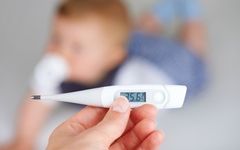 Most often, body temperature decreases when the body is weakened after the flu or a cold. But acute respiratory diseases are not the only causes of the sudden cooling of the human body. Doctors identify many factors that negatively affect the thermoregulation of the body.
Most often, body temperature decreases when the body is weakened after the flu or a cold. But acute respiratory diseases are not the only causes of the sudden cooling of the human body. Doctors identify many factors that negatively affect the thermoregulation of the body.
- A decrease in temperature is almost always fixed when the immune system is suppressed.
- Also, low body temperature is observed in people suffering from beriberi.
Vitamin deficiency in the body is usually observed after severe infectious diseases, because the immune system spends a large amount of nutrients on the battle with pathogenic microorganisms. To normalize the content of vitamins in the body, it is necessary to consume vegetables and fruits daily, take vitamin-mineral complexes.
A sharp decrease in body temperature and an increase in heart rate are recorded in people with a cold or flu who decide to engage in sports training or vigorous physical activity. In acute respiratory diseases, the human body quickly gets tired, if it is overly strained, then recovery is delayed, and the temperature drops to dangerous levels.
Some people lose weight during the flu, sometimes even to the point of anorexia. In this condition, a decrease in temperature is often observed. But even non-influenza people who have a significant underweight, constantly have a low temperature. Also, the body can cool down due to circulatory disorders in ARVI, and also due to wearing shoes that are not the right size, uncomfortable and tight clothing that compresses blood vessels.
Symptoms of a decrease in body temperature with acute respiratory infections
 It is not easy to understand that the temperature has decreased by external signs. It is better not to suffer guesswork, but to use a thermometer. Most often, a sick person with a decrease in body temperature has the following symptoms:
It is not easy to understand that the temperature has decreased by external signs. It is better not to suffer guesswork, but to use a thermometer. Most often, a sick person with a decrease in body temperature has the following symptoms:
- weakness, impotence;
- drowsiness;
- feeling overtired;
- apathetic state.
Some sick people become nervous, anxious, irritable. In rare cases, low temperature is accompanied by dizziness, severe migraine, low blood pressure, tinnitus. Adults, as well as children, when cooling the body after a cold or flu, in no case should they wipe the body. This procedure does not normalize temperature indicators, but only worsens the condition of a person.
To raise the temperature after a respiratory illness, an adult is recommended:
- prepare yourself hot tea with natural honey,
- drink fresh squeezed juices,
- eat fruits and vegetables daily,
- take vitamin and mineral complexes.
Lying in bed or sitting in front of the TV, you can put a hot heating pad under your side or back.
What and how to treat low body temperature?
With a low body temperature with a cold, you don’t need to worry too much. Temperature indicators are normalized when recovery occurs. However, with a decrease in body temperature, it is still advisable to visit your doctor. A medical specialist can give recommendations on alleviating the condition, daily routine and nutrition, advise on the most appropriate medications and vitamin complexes.
 There are several ways to raise the body temperature, get rid of heart palpitations and runny nose.
There are several ways to raise the body temperature, get rid of heart palpitations and runny nose.
- First, a sick person should be in a state of rest and relaxation. He definitely needs to observe bed rest, sleep soundly at night and have a good rest during the day, because his body fights against pathogenic microorganisms even during sleep.
- Secondly, during an illness, a person needs to protect himself from stressful situations and experiences as much as possible, try to control his emotions. Any nervous shocks negatively affect the state of the body, slow down the healing process. A cold person with a low temperature should forget about going to work for a while.
- Thirdly, in order to normalize the heart rate and body temperature after a cold, you need to eat a quality and balanced diet.
The daily diet must include foods rich in vitamins, trace elements and other nutrients. The menu should include fresh, thermally unprocessed vegetables, berries, fruits, as well as sour-milk dishes that help improve the functioning of the digestive tract.
If the doctor diagnoses a patient with beriberi after the flu, then he prescribes vitamin complexes. The body of a person who has had an acute respiratory disease especially needs ascorbic acid, because vitamin C is important for strengthening the immune system. It is useful during illness to drink a drink from crushed eggshell and lemon juice.
 To increase body temperature during a cold, you can:
To increase body temperature during a cold, you can:
- take a hot bath
- drink herbal tea with honey
- go to bed with a heating pad.
It is very useful to drink during respiratory diseases, accompanied by a decrease in temperature, runny nose and tachycardia, tonic herbal medicines: eleutherococcus, ginseng, echinacea. It is strictly forbidden to take antipyretic drugs at low body temperature.
Prevention of low temperature
To avoid colds and viral diseases, accompanied by tachycardia and a decrease in body temperature, it is necessary to harden, devote time to physical training, and lead an active lifestyle. During the first hardening procedure, you do not need to immediately tip over a bucket of ice water. The temperature of the water should be lowered gradually: first use slightly warm, then cold, and finally, ice water.
You need to eat well and fully, choose foods rich in vitamins and minerals when compiling the menu. In the cold season, going for a walk, you need to dress warmly, and most importantly, wear only tight, waterproof, comfortable shoes. It is impossible to wear tight and tight-fitting boots in winter: there is no layer of air between them and the legs. As a result, the blood vessels of the legs are compressed, the limbs freeze, and the body temperature decreases.
Do not worry if, despite all the precautions, a cold sets in, and the body temperature suddenly drops. After all, this means that the immune system overcame pathogenic microorganisms, but after the struggle it weakened. You just need to help her recover.
And some secrets...
If you or your child gets sick often and is treated with antibiotics alone, know that you are only treating the effect, not the cause.
So you just "drain" money to pharmacies and pharmaceutical companies and get sick more often.
STOP! stop feeding who you don't know!!! You just need to boost your immunity and you will forget what it is to get sick!
First of all, you need to clearly understand that in medical practice there is a norm for body temperature - from 35.7 to 37.0 degrees.
Often a patient with a temperature of 35.0 or 35.5 feels comfortable, which does not require additional treatment. Nevertheless, do not forget that it is able to cool not only the outer covers, but also the internal organs.
The main reason for this symptom is the effect of toxins on one of the parts of the brain, namely the hypothalamus. Against the background of poisoning of the body, the work of the central nervous system is disrupted, namely, it is responsible for the temperature regime of the body. As a result, we observe a low body temperature, which manifests itself both in an adult and in a child.
The occurrence of a low temperature is also facilitated by an infection that has not been fully responsive to therapy, for example, with food poisoning. Most often this applies to viral diseases. The transferred pathology significantly weakens the immune system, which helps to reduce the temperature. In this case, it is recommended to take immunomodulatory drugs.
The decrease in temperature can be recorded using a conventional medical thermometer. But in most cases, you can do without it, as characteristic symptoms are observed:
If taken during the period of a cold, then this phenomenon is associated with a significant decrease in the body's resistance and its weakening. First of all, it concerns the immune system.
Under the influence of external factors such as colds, the work of the immune system is reduced, which leads to physical and mental exhaustion. Therefore, quite often a doctor can observe a low temperature when making a diagnosis of acute respiratory infections or acute respiratory viral infections.
It should be noted that this symptomatology is also characteristic of other more serious pathologies. Therefore, in the case when such phenomena remain after treatment, you need to contact your doctor. After a series of analyzes, it will be possible to establish the exact cause of the constantly lowered temperature.
Decrease in temperature in children during a cold
Young children, up to about 3 years old, often endure any respiratory infections with a lowered central temperature. This phenomenon is associated with an incompletely formed thermoregulatory process in the body.
Older children and schoolchildren can tolerate a drop in temperature for the same reasons as adults. In puberty, a decrease in temperature should be taken as a consequence of changes in hormonal levels. This phenomenon does not require special treatment, as it is associated with puberty. In some cases, a child's low temperature can reach 35 degrees without obvious reasons.
When a child is still diagnosed with a disease of the type of acute respiratory infections or acute respiratory viral infections, then treatment can be started, both medication and folk. However, do not use drugs to increase the temperature.
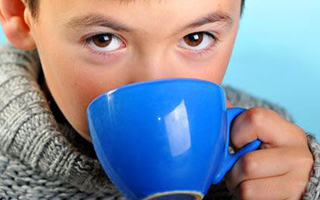 It would be advisable to drink warm and plentiful. In this case, the child must be warmly dressed.
It would be advisable to drink warm and plentiful. In this case, the child must be warmly dressed.
We should not forget about taking antiviral agents and, as an addition, vitamin complexes. Vitamins should be selected individually, based on the age of the patient.
A good alternative would be products based on natural ingredients, for example, echinacea tincture, teas from medicinal herbs. It is also worth introducing fruit juices and fresh vegetables into the diet.
If respiratory or colds are accompanied by a decrease in temperature, then taking antipyretics is prohibited. In this case, only a therapist can prescribe therapy.
- provide complete rest to the patient;
- sleep for at least 8 hours;
- taking warm baths;
- the patient must be dressed in comfortable clothes without impurities of synthetics;
- during the period of illness and within a month after it, it is recommended to take lemongrass tincture as a natural stimulant of the immune system;
- additional intake of vitamin C and calcium.
Hypothermia as a cause of cancer
However, oncology is not always accompanied by an increase in temperature. In some cases, especially in the early stages of cancer, hypothermia (decrease in core temperature) can be observed. As a rule, this symptom precedes the others by 2 or more months. Often the temperature can stay at a certain level for up to several years.
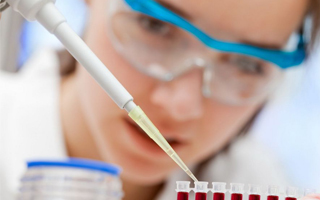 Lowering the temperature is influenced by immune processes, including protective functions in relation to malignant tumors. Note that temperature jumps directly depend on the tumor, which produces a type of certain protein that affects its decrease or increase.
Lowering the temperature is influenced by immune processes, including protective functions in relation to malignant tumors. Note that temperature jumps directly depend on the tumor, which produces a type of certain protein that affects its decrease or increase.
When there are no signs of oncology, but there is a low temperature, it is advisable to conduct a blood and urine test (biochemical).
Decrease in temperature in newborns
A decrease in body temperature in infants can be observed with diseases of the thyroid gland or spinal cord. Therefore, at the very first days, you need to contact a pediatrician as soon as possible.
A decrease in temperature can most often be in such cases:
- children born ahead of time(premature);
- the first 8 weeks of a baby's life;
- against the background of a long-term viral disease;
- in case of lack of vitamin C;
- hormonal imbalance;
- imbalance of the immune system;
- the presence of oncology;
- non-compliance with the temperature regime (hypothermia of the newborn).
Often, a decrease in temperature can be accompanied by a decrease in appetite or its complete absence, as well as crying. In this case, it is forbidden to treat the child on your own, you need to consult a doctor.
There are only exceptions when it is possible to normalize the temperature of the baby at home - hypothermia. Here you need a plentiful and warm drink, a heating pad near the legs, as well as insulated clothing. The remaining cases, when a low temperature is observed in a newborn child, require the intervention of a medical specialist.
Decrease in temperature during lactation
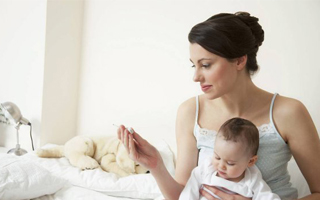 To begin with, it is necessary to clarify that such a phenomenon as low body temperature in women during breastfeeding, although a rare occurrence, does not always indicate the causes of the pathology. If such a phenomenon was observed before pregnancy, then after it is not considered a disease requiring treatment.
To begin with, it is necessary to clarify that such a phenomenon as low body temperature in women during breastfeeding, although a rare occurrence, does not always indicate the causes of the pathology. If such a phenomenon was observed before pregnancy, then after it is not considered a disease requiring treatment.
In the case when a young mother did not notice this manifestation before childbirth, now this may indicate fatigue, against the background of lactation. Especially often, a decrease in temperature can be observed in women in labor with two or more children, as the intensity of lactation and its duration increase. Occasionally, a low body temperature can be observed simultaneously in both the mother and the baby.
Sometimes a decrease in temperature can indicate the presence of anemia and protein deficiency. After childbirth, the body is exhausted, therefore, such phenomena are not uncommon. Here it is recommended to eliminate the cause of low temperature in a nursing mother by prescribing a special vitamin complex. You should also use high-quality temperature measuring instruments.
Today you can buy a lot of digital thermometers, but you need to consider the fact that they are not always accurate. For a more accurate and reliable result, it is recommended to use several types of device.
When is temperature reduction considered safe?
A decrease in temperature should not always be taken as a direct threat to health. In medical practice, there are cases when low temperature was not the cause of oncological or respiratory diseases, but was caused by other factors:
1) Neurotic disorders. Stressful conditions, constant emotional stress, contribute to the appearance of chronic fatigue. Against the background of which a decrease in body temperature can be observed. Note that in some cases the temperature can rise significantly. In such cases, it is necessary to put the emotional background in order.
2) As a result of an illness (flu or acute respiratory infections). After prolonged respiratory disease, as well as treatment with antibiotics and antiviral agents, one can observe a reduced ![]() temperature for 6-8 weeks. As a rule, after this period the temperature stabilizes.
temperature for 6-8 weeks. As a rule, after this period the temperature stabilizes.
3) The period of pregnancy. Due to changes in the hormonal background of a pregnant woman, an increased or decreased temperature can last the entire period of pregnancy, as well as the first few months of lactation. When such a phenomenon does not cause discomfort or is not accompanied by other - more severe - symptoms, therapy is not required. However, it is necessary to inform the supervising doctor - gynecologist about this.
Gentle ways to raise the temperature
In many cases, a person with a slightly lower temperature feels quite comfortable. However, for some, this can be a problem - for example, for people suffering from neuroses or pregnant women. Therefore, in some cases, you need to raise the temperature yourself. For these purposes, there are several, the most acceptable ways:
- Take a warm bath with aromatic oils. For people suffering from neurosis, it is recommended to add lavender, vanilla or jasmine oil, for pregnant women - patchouli, rose, orange.
- Drink hot teas with honey or jam throughout the day. Warm drinks based on medicinal plants, such as thyme and chamomile, are also good.
- Traditional medicine advises the use of drinks based on honey and ginger root. Note! This drink is not recommended for pregnant women and people with gastrointestinal problems.
- A slight increase in temperature is facilitated by a course of vitamin E. It helps to strengthen blood vessels and saturate cells with oxygen.
- You can also use motherwort tincture before going to bed. This method is suitable for people suffering from psycho-emotional instability.
- Daily consumption of dark chocolate also contributes to an increase in core body temperature. But do not forget that it has its own contraindications - allergies.
Note that all tips traditional medicine must be used when the causes of low body temperature in a child and an adult are not caused by severe pathologies. At the slightest suspicion, it is better to contact a therapist or pediatrician without starting self-medication.
Practically every person knows from childhood that the ideal body temperature is 36.6 degrees. Every second person will be able to answer the question - what to do if the body temperature rises to 37-38 degrees. But not everyone knows how low temperature affects the body, why it occurs, and how to deal with it.
Optimal body temperature
During the day, a person's body temperature can vary from 35.5 to 37 degrees, and this is normal. Cold, heat, overwork, overexcitation, etc. can have a great influence on the thermometer. Some people live with a slight deviation from 36.6 degrees all their lives, without experiencing any ailments, this is due to their individual functional characteristics. A person is endowed with thermoregulation, which controls the process of raising and lowering the temperature (depending on the environment and the state of the body). A woman may notice an abrupt change in the indicators on the thermometer both during menstruation and during ovulation. It is worth alerting when the low body temperature lasts for several days.
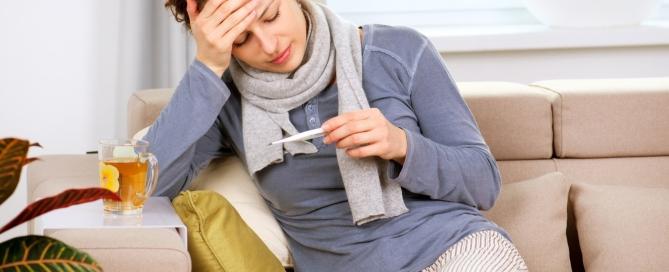
Possible disorders in the body associated with a decrease in temperature:
- Weakened immunity.
- Impaired circulation.
- There is a decrease in body temperature with: colds, flu, SARS and acute respiratory infections.
- Avitaminosis.
- Depletion of the body.
- Recent surgeries.
- Disorders in the endocrine system.
- The presence of chronic diseases.
- Infection.
- Decreased level of hemoglobin in the blood.
- Diseases of the brain.
- Poisoning.
- Hypothermia.
- Inflammation.
- Shock state.
- Anorexia.
- HIV infection or AIDS.
There are many reasons why a person has a low body temperature. And it is impossible to determine what exactly caused such a condition without additional diagnostics. If the symptoms are observed for more than 2 days, then it is necessary to identify the causes of the ailment, because the consequences can be very serious. Usually, low temperature is accompanied by drowsiness, weakness, impaired mental activity and physical activity, depression and irritability.
What to do in case of low temperature?
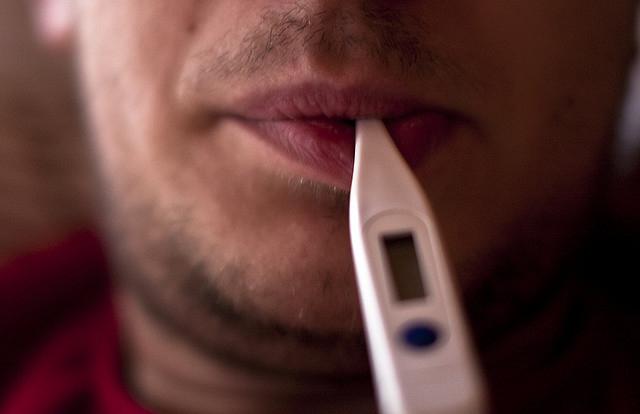 First, you need to see a doctor and take everything necessary tests. According to their results, it will be possible to judge the presence and nature of the disease. You will need to donate blood for biochemistry, undergo an ECG procedure, and you may need the help of other specialists. Very often there is a low temperature with a cold. If clinical picture state of the body indicates a weakened immune system after illness or overwork, then the doctor can prescribe you the right diet, vitamins and a sparing daily schedule. If there is reason to suspect more serious causes of low temperature, then you will be given a referral to an oncologist, endocrinologist, neurologist, gastroenterologist, and may also be prescribed
First, you need to see a doctor and take everything necessary tests. According to their results, it will be possible to judge the presence and nature of the disease. You will need to donate blood for biochemistry, undergo an ECG procedure, and you may need the help of other specialists. Very often there is a low temperature with a cold. If clinical picture state of the body indicates a weakened immune system after illness or overwork, then the doctor can prescribe you the right diet, vitamins and a sparing daily schedule. If there is reason to suspect more serious causes of low temperature, then you will be given a referral to an oncologist, endocrinologist, neurologist, gastroenterologist, and may also be prescribed





